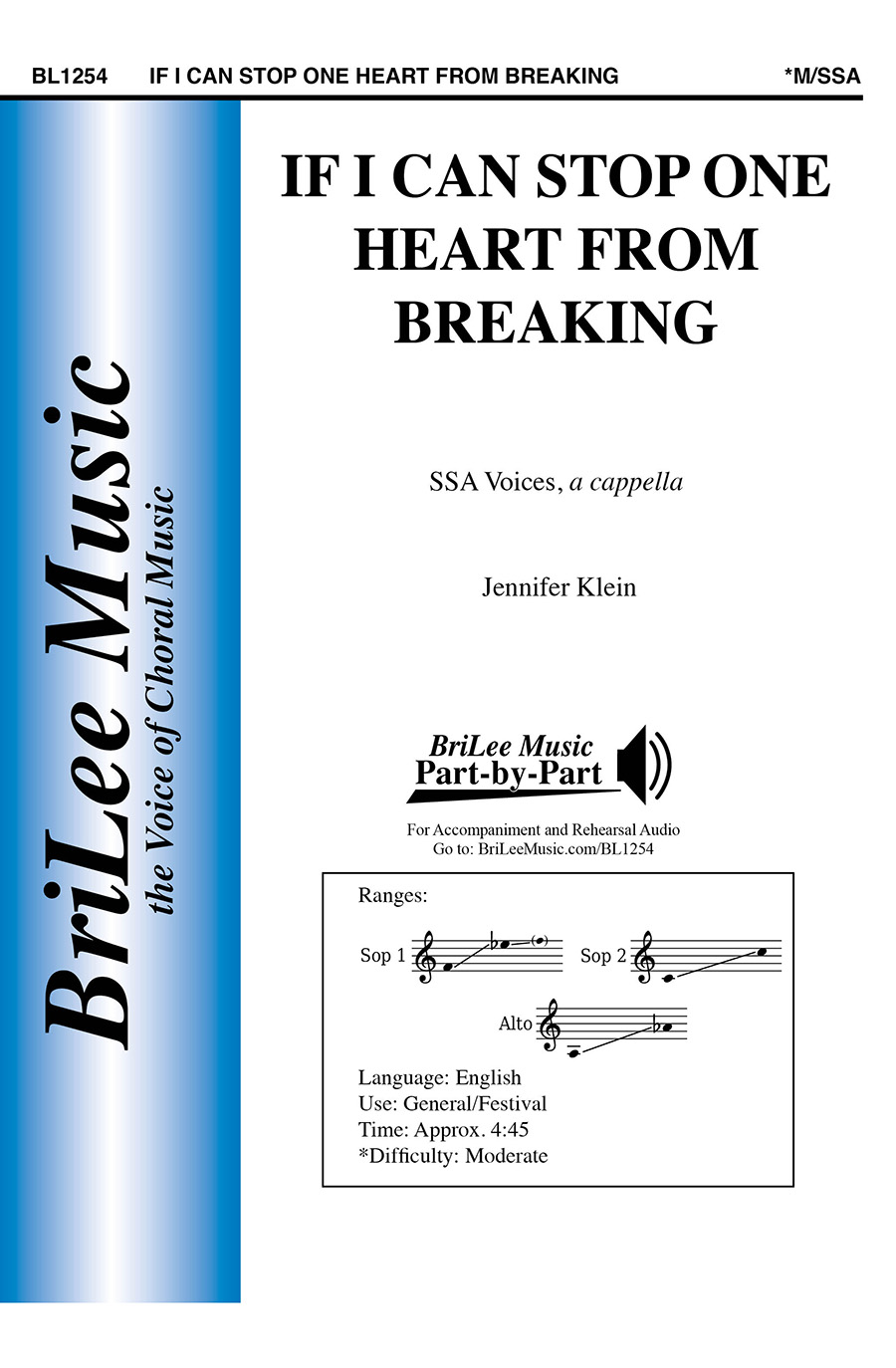BriLee Music / cf / BL1254
If I Can Stop One Heart from Breaking
$2.25
Jennifer Klein
Scroll down for Related Items listings.
Treble.
This lovely SSA setting of the beloved Emily Dickinson text is an excellent piece to develop phrase shaping, enhanced expressive singing through intentional syllabic stress as well as movement through the accelerandos. Doing so allows this music to mimic human life, giving it lungs that breathe and a heart that beats ....a life not lived in vain!
About the Poet and the PoemPoet Emily Dickinson grew up in Amherst, Massachusetts, in the mid-19th century. Though a prolific writer, her poems remained unpublished until after her death when her family discovered some 1800 of her poems compiled in a series of booklets created and sewn together by Dickinson herself.After one year at college, Dickinson moved back to the family home, where her writing became her escape from the day-to-day life of domestic chores which she loathed. She is said to have become somewhat of a recluse, keeping to her room and observing the world from her bedroom window. It is known by the language in her numerous letters to others that she held strong opinions on many topics, including progressive views on religion, the role of women in society and marriage, and even love itself.One hypothesis is that this poem, discovered after Dickinson’s death, was in response to a somewhat clandestine romance she had that ended unhappily. Another suggests it was borne of her years of serving as caregiver for her ailing mother.Whatever the motivation for writing this poem, Dickinson makes clear that one’s life becomes more meaningful when it is spent helping others, rather than focusing on one’s own interests alone. She thought this so important, she stated this twice in her short poem.The Poem, with Dickinson’s Punctuation and CapitalizationIf I can stop one heart from breakingI shall not live in vainIf I can ease one Life the AchingOr cool one in painOr help one fainting RobinUnto his Nest again,I shall not live in Vain.A Few Performance Notes:Start small and build. Like the “little engine that could” thought itself into success through repeated statements, let the opening idea grow from a wishful thought into a strongly-held statement of truth.The high F notes in the Soprano 1 part in mm. 26-28 are optional. Even one voice on that note will help make that crescendo moment pop.Be aware of word painting and the use of pitches to express the text (like at m. 27 with “aching”).One benefit of an unaccompanied piece is the opportunity to shape the notes, phrases and tempos to draw your audience into the story you tell. Take your time at the beginning, letting the opening solo line linger into the silence of the caesura. The fermata at m. 19 builds the suspense as it crescendos into a rest before the declaration is at last made. Heed the stretch of the tenutos and the movement of the accelerandos. Doing so allows this music to mimic human life, giving it lungs that breathe and a heart that beats … a life not lived in vain!
Voicing/Instrument: SSA/Treble Chorus A Cappella





